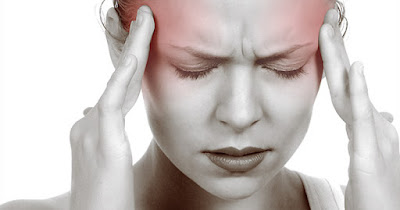What Is Migraine Headache: 5 Things You Need To Know About Migraine
what is a migraine
- A migraine is a primary headache disorder characterized by recurrent headaches that are moderate to severe. Typically, the headaches affect one half of the head, are pulsating in nature, and last from two to 72 hours. Migraine headache pain is generally made worse by physical activity. Up to one-third of people have an aura: typically a short period of visual disturbance which signals that the headache will soon occur. Occasionally, an aura can occur with little or no headache following it. Globally, approximately 15% of people are affected by migraines. It most often starts at puberty and is worst during middle age. In some women they become less common following menopause
Migraine headache causes
Though migraine headache causes aren't understood, genetics and environmental factors appear to play a role.Migraines may be caused by changes in the brainstem and its interactions with the trigeminal nerve, a major pain pathway. Imbalances in brain chemicals — including serotonin, which helps regulate pain in your nervous system — also may be involved. Researchers are still studying the role of serotonin in migraines.Serotonin levels drop during migraine attacks. This may cause your trigeminal nerve to release substances called neuropeptides, which travel to your brain's outer covering (meninges). The result is migraine pain. Other neurotransmitters play a role in the pain of migraine, including calcitonin gene-related peptide (CGRP).- Common migraine symptoms
- Eye pain
- Sensitivity to light or sound
- Nausea
- Vomiting
- Severe pain, usually on one side of the head that some individuals describe as "pounding"
Migraines can also be triggered by many factors, for example:
- Hormonal changes
- Stress
- Strong stimuli like loud noises
- Certain foods
4. Migraine medication
Prescription medications are used as migraine relief to relieve the pain of migraine and they include triptans (a class of drugs), for example:- sumatriptan (Imitrex, Alsuma, Imitrex STATdose System, Sumavel DosePro, Zecuity, Treximet)
- rizatriptan (Maxalt, Maxalt-MLT)
- eletriptan (Relpax)
- zolmitriptan (Zomig, Zomig-ZMT)
- naratriptan Amerge)
- almotriptan (Axert)
- frovatriptan (Frova)
Lifestyle changes like eating a healthy diet and getting exercise may help reduce the frequency of your attacks.
5. Migraine prevention
Until recently, experts recommended avoiding common migraine triggers. Some triggers can't be avoided, and avoidance isn't always effective. But some of these lifestyle changes and coping strategies may help you reduce the number and severity of your migraines:
- Transcutaneous supraorbital nerve stimulation (t-SNS). This device (Cefaly), similar to a headband with attached electrodes, was recently approved by the Food and Drug Administration as a preventive therapy for migraines. In research, those that used the device experienced fewer migraines.
- Learn to cope. Recent research shows that a strategy called learning to cope (LTC) may help prevent migraines. In this practice, you are gradually exposed to headache triggers to help desensitize you to them. LTC may also be combined with cognitive behavioral therapy. More research is needed to better understand the effectiveness of LTC.
- Create a consistent daily schedule. Establish a daily routine with regular sleep patterns and regular meals. In addition, try to control stress.
- Exercise regularly. Regular aerobic exercise reduces tension and can help prevent migraines. If your doctor agrees, choose any aerobic exercise you enjoy, including walking, swimming and cycling. Warm up slowly, however, because sudden, intense exercise can cause headaches. Regular exercise can also help you lose weight or maintain a healthy body weight, and obesity is thought to be a factor in migraines.
What Is Migraine Headache: 5 Things You Need To Know About Migraine
 Reviewed by Unknown
on
December 01, 2017
Rating:
Reviewed by Unknown
on
December 01, 2017
Rating:
 Reviewed by Unknown
on
December 01, 2017
Rating:
Reviewed by Unknown
on
December 01, 2017
Rating:




No comments